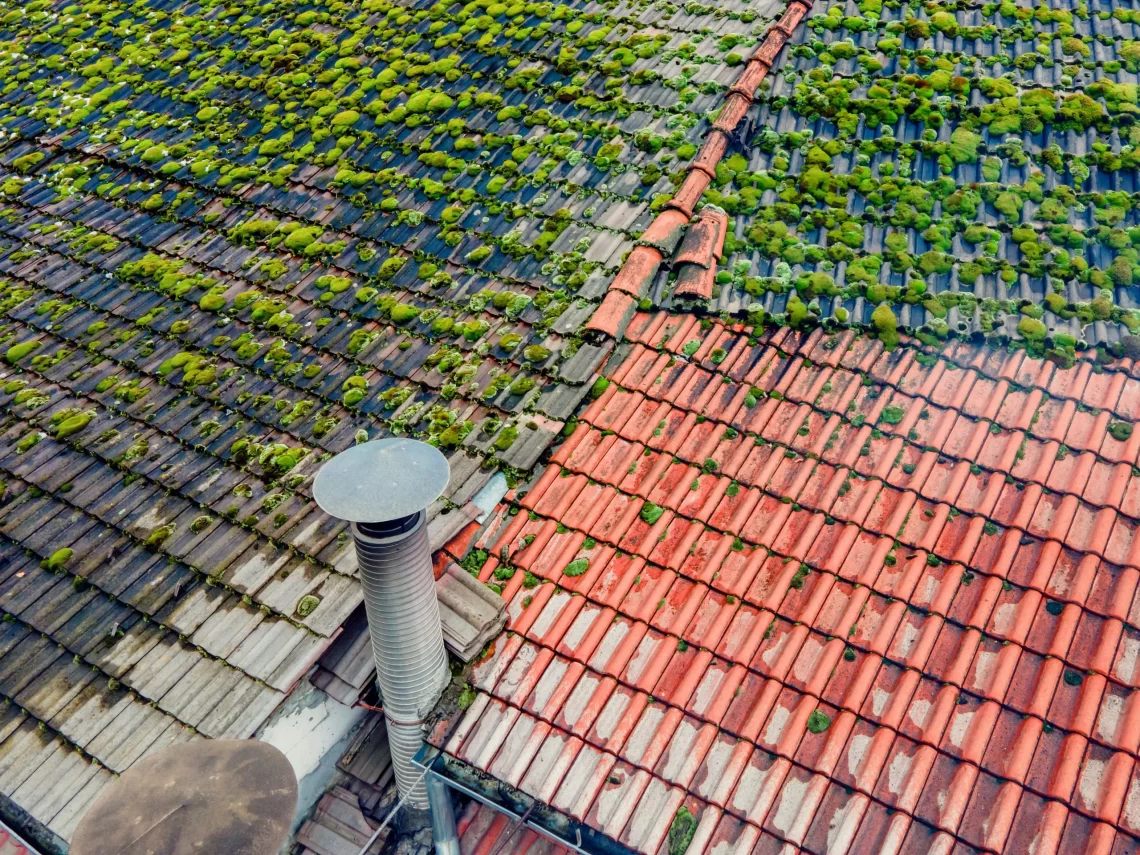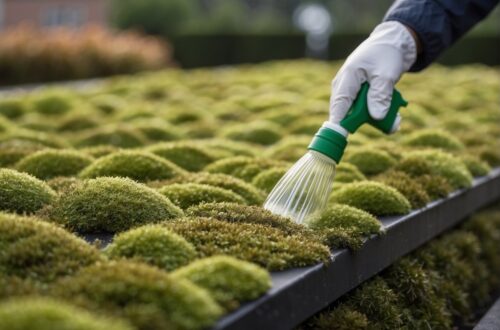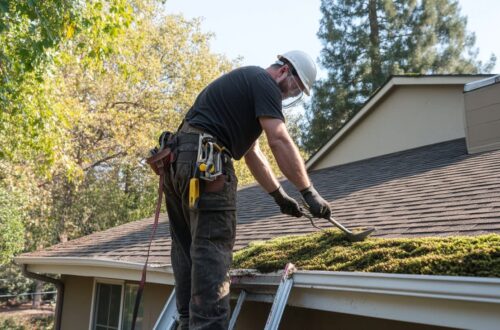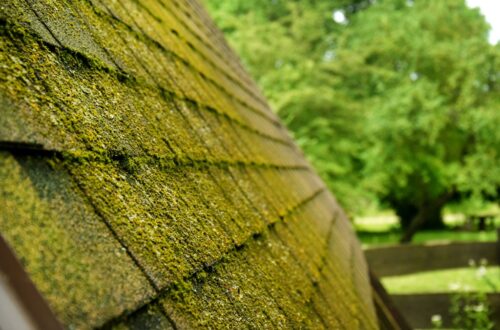Moss growth on roofs is a common issue in regions with high humidity and frequent rainfall. While it may appear harmless or even add a rustic charm, moss can lead to serious damage over time. It retains moisture, promotes rot, and can compromise the structural integrity of a roof. Different roof materials require unique approaches to moss removal to avoid damage while ensuring long-term protection. Understanding the best practices for each type of roof is crucial for homeowners looking to maintain their property.
The Impact of Moss on Different Roofs
Moss thrives in damp, shaded areas, growing in the crevices of shingles, tiles, and other roofing materials. As it spreads, it lifts roofing elements, creating gaps that allow water to seep in. This can lead to leaks, mold growth, and eventual roof failure. In colder climates, trapped moisture can freeze and expand, worsening the damage. Roofs made from asphalt shingles, wood shakes, metal, and tile each have specific vulnerabilities when it comes to moss growth, making tailored removal techniques essential.

Removing Moss from Asphalt Shingle Roofs
Asphalt shingles are one of the most common roofing materials and are highly susceptible to moss buildup. The textured surface provides an ideal space for moss spores to take hold. When removing moss from asphalt shingles, gentle methods should be used to avoid damaging the granules that protect against UV rays and water infiltration.
Soft washing with a mild moss-killing solution is often the best approach. Using a low-pressure spray of water combined with a roof-safe cleaning agent allows moss to be loosened and washed away. Scrubbing should be avoided, as it can wear down the shingles and reduce their lifespan. Preventive measures, such as installing zinc or copper strips along the roof ridge, can help deter moss growth by releasing ions that inhibit spore development.
Cleaning Moss from Wood Shake Roofs
Wood shake roofs are particularly vulnerable to moss growth due to their organic composition. As moss accumulates, it retains moisture that accelerates wood rot and deterioration. Removing moss from wood shakes requires extra care to prevent structural damage.
A gentle cleaning solution mixed with water can be applied and left to soak into the moss, allowing it to loosen naturally. A soft-bristled brush or a low-pressure water rinse can then be used to remove the remaining growth. High-pressure washing should be avoided, as it can strip away the natural protective oils of the wood, leading to premature aging. Treating the roof with a wood preservative can help maintain its longevity and reduce future moss accumulation.
Addressing Moss on Metal Roofs
Metal roofs are more resistant to moss compared to other materials, but they are not entirely immune. While moss does not cause significant damage to metal surfaces, it can still retain moisture and create aesthetic issues. The presence of moss can also lead to corrosion if the protective coatings of the metal are compromised.
Cleaning moss from a metal roof typically involves using a mild detergent and water solution, followed by a gentle scrubbing with a soft brush or cloth. Because metal roofs have a smooth surface, moss removal is usually easier than with textured materials. Ensuring proper roof drainage and minimizing shade over the roof can help prevent moss from growing in the first place.
Removing Moss from Tile Roofs
Tile roofs, whether made of clay or concrete, have a durable but porous surface that can encourage moss growth. Over time, moss can take root in the tiny crevices of tiles, leading to structural weakening. If left unchecked, moss growth can result in broken tiles and water infiltration.
When cleaning a tile roof, care must be taken to avoid cracking or dislodging tiles. Using a biodegradable moss-killing solution allows the moss to break down naturally before it is rinsed off with low-pressure water. Walking on tile roofs should be done cautiously or avoided altogether, as the tiles can easily break under pressure. Sealing the roof with a waterproofing agent can help reduce moss regrowth and extend the life of the tiles.
Preventing Moss Regrowth on Any Roof
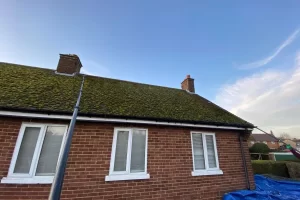 Once moss has been removed, taking proactive steps to prevent its return is essential. Keeping tree branches trimmed to allow more sunlight onto the roof reduces the damp conditions that moss thrives in. Regular roof inspections and cleanings can help identify moss before it becomes a major issue. Installing metal strips along the roof ridges or using moss-resistant roofing materials can provide long-term protection.
Once moss has been removed, taking proactive steps to prevent its return is essential. Keeping tree branches trimmed to allow more sunlight onto the roof reduces the damp conditions that moss thrives in. Regular roof inspections and cleanings can help identify moss before it becomes a major issue. Installing metal strips along the roof ridges or using moss-resistant roofing materials can provide long-term protection.
Gutters should be kept clear of debris, as clogged gutters can create moisture buildup along the roofline, encouraging moss growth. Additionally, ensuring proper roof ventilation can help regulate moisture levels and reduce the conditions that favor moss development.
The Importance of Professional Moss Removal
While some homeowners choose to tackle moss removal on their own, professional roof cleaning services can provide a safer and more effective solution. Experts have access to specialized tools and cleaning agents designed to remove moss without damaging the roofing material. They also have the necessary experience to assess the overall health of the roof and recommend appropriate preventive measures.
Professional moss removal is particularly beneficial for roofs that are difficult to access or have steep slopes. Attempting DIY removal in such cases can pose safety risks. Hiring a professional ensures that the job is done thoroughly and that the roof remains in good condition.

